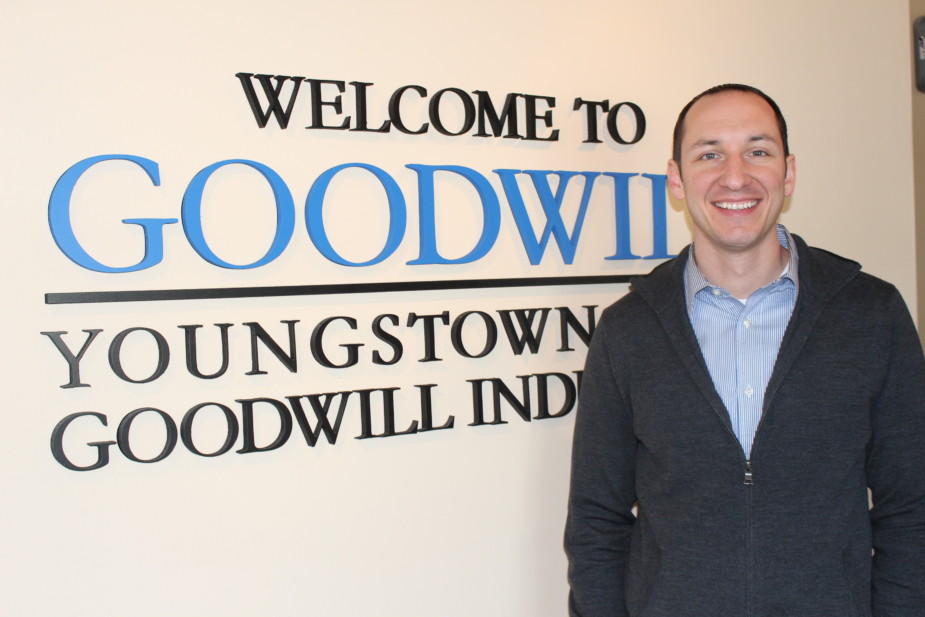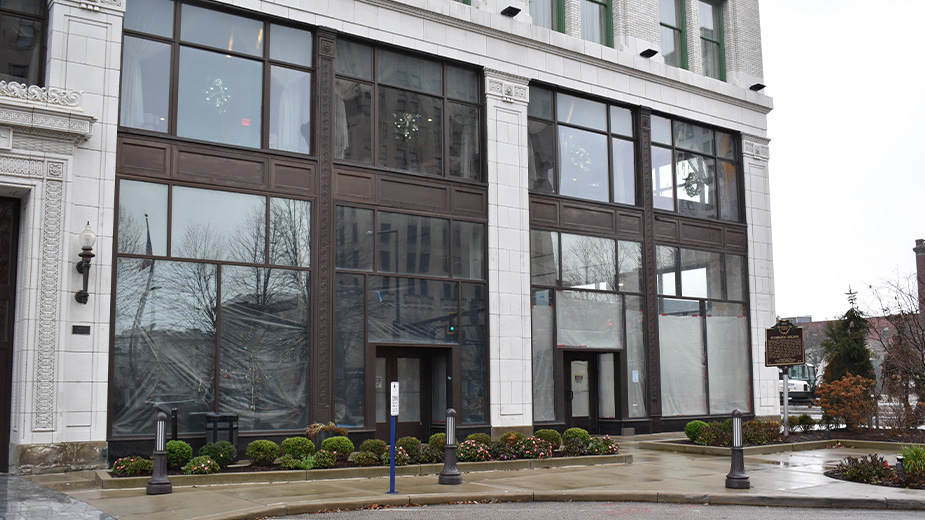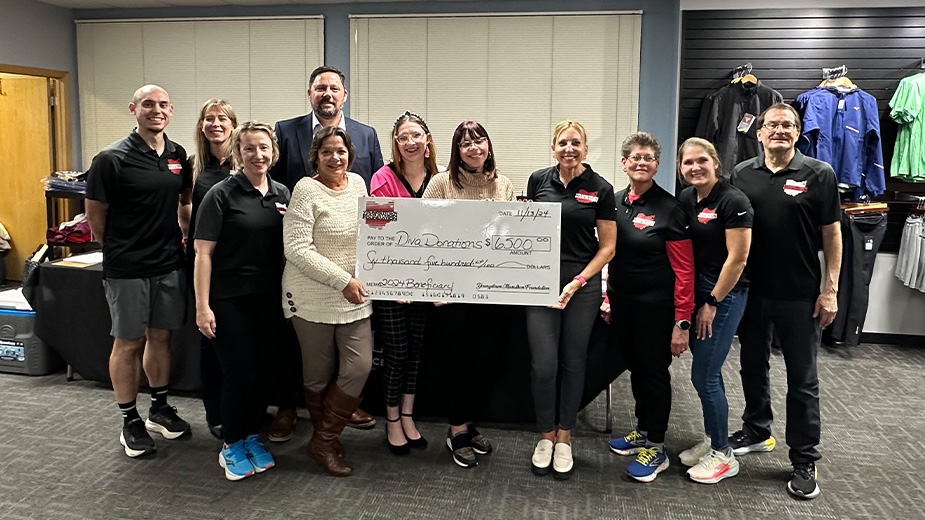Goodwill Industries Transitions to New Leadership
YOUNGSTOWN, Ohio – When most people think of Goodwill, its thrift stores are what come to mind.
“That’s probably the hardest thing, to get the community to understand exactly what it is Goodwill does,” says Mike McBride, who retired in April as executive director of Youngstown Area Goodwill Industries.
“Everybody knows Goodwill for donations and for stores,” he says. “They don’t realize the purpose.”
Put briefly, Goodwill’s mission is to help people become independent.
Making sure that message is clearly communicated to the community is priority No. 1 on the list of the new executive director, Jim Freeze.
“When I was going through the interview process. I didn’t know about all of the great things that Goodwill is doing,” he says.
The primary way Goodwill helps people gain independence is through employment. Freeze learned how empowering a job can be in Iraq.
After graduating from the U.S. Military Academy at West Point, the Boardman native was selected to lead a platoon of soldiers during his first tour there in 2007.
“I was experiencing violence in Iraq and in talking to the tribal elders and the people, I realized that these young people were engaging in violence because they didn’t have jobs,” he recalls.
Once the Iraqis were employed and able to care for their families, “We were no longer getting shot at,” Freeze says. “I realized the power that work can have in somebody’s life.”
The hub of Goodwill’s operations in the area remains its headquarters on Belmont Avenue on the north side of Youngstown. The 80,000-square-foot campus consists of a store, administrative offices, warehouse, classrooms, laundry and a reading center.
“When someone brings a product to one of our donation centers, the product gets trucked here and then gets sorted and processed. And then we ship it back out to the stores,” Freeze says as he stands in the middle of a flurry of activity.
In one section, 40 workers sort through bin after bin of clothing. They inspect the clothing before tagging and hanging the items on large racks that will be sent to one of Goodwill’s eight stores.
“Each rack holds about 1,500 pieces and we load about 50 racks a day,” says textiles supervisor Kathy Treese. “We have a variety of people who come in throughout the week. The most we have is on Wednesdays when we have 50 to 55 people.”
The workers sort clothing from 8 a.m. to 3 p.m. five days a week.
Today people come to Goodwill seeking employment services for a variety of reasons, among them homelessness, a lack of job skills and disability.
When McBride became executive director in 1982, the majority of clients were disabled, he says.
“One of the things I learned was when the economy is good people with disabilities can work,” McBride says. “When the economy is bad, they’re the last to be hired.”
But as the need for employment services in the community expanded beyond the disabled, McBride began to look for additional programs to help the unemployed.
One of his proudest accomplishments, he says, is involving Goodwill in state-use and federal contracts so Goodwill can provide services to the state and federal governments.
“That started our laundry services. And it also started our janitorial services,” he says. “We originally started cleaning roadside rests on the interstates and today we provide janitorial services to various businesses in the community.”
Since McBride began at Goodwill, it has grown to 250 workers from 120 and has an annual payroll of more than $3 million.
Freeze calls the Goodwill’s business model “a win-win-win,” because the more the community supports Goodwill, the more people it can employ in the community, with salaries that will be spent in the community.
“When you shop at Goodwill, when you donate to Goodwill, you are providing an opportunity to someone in our community who might not otherwise have an opportunity,” Freeze says.
Many of the workers at Goodwill stores and its headquarters are former clients. Indeed, clients make up some portion of almost every level of Goodwill’s operations, from its store cashiers to its administrative staff.
And many are placed in jobs outside the organization. Part of Robert Mitchell’s job is to drive throughout the area to check on them.
“We’ve had success with a lot of employers in the area such as Belmont Confection, VXI, InfoCision, some of the fast-food restaurants,” Mitchell says.
The clients come to Goodwill, referred by the Rescue Mission of the Mahoning Valley, the Ohio Bureau of Vocational Rehabilitation and other agencies.
After a weeklong evaluation, they spend a month or so learning the various Goodwill operations before they’re placed in an outside job.
“We work on resumes, give them instruction on how to dress,” Mitchell says in a classroom where the training takes place.
The clients are given mock interviews as well as a chance to brush up on their computer skills before they apply for a position.
Mitchell says the goal is to place four people a month in jobs.
But employment isn’t the only way Goodwill strives to empower people in the community. Just behind the store, inside its headquarters, sits the Youngstown Radio Reading Service.
Inside are several small recording studios where volunteers come every week to record various articles and publications that are broadcast to the blind community.
Visitors would likely find the services coordinator, Mike Bosela, inside one of the studios mixing the recordings, adjusting the audio levels and archiving the various programs.
Bosela, who is blind, performs many of the tasks with the aid of a voice feature on the computers that vocalizes his keystrokes.
The computer is almost no match for Bosela’s speed, barely getting a syllable out before he realizes he’s typed the correct command and moved to the next one.
“It’s a private channel radio station and it operates on the side band of WYSU-FM,” he says. “We have radios here that we give to people. It’s a pre-tuned radio that we distribute free of charge and it has one channel, our channel.”
Every week, about 100 volunteers give their time to the reading service, recording everything from newspapers to magazines to sports columns. “It’s information that otherwise is unavailable to people who are blind,” Bosela says, “and we give them access to it.”
A reading of The Business Journal takes place at 5 p.m. every Monday.
Because most of the 1,200 people who use the service are older, the program most listened to is the obituaries.
“I tell people, ‘Blind people are no more gruesome than the general population.’ As you get older, I guarantee, you’re going to gravitate towards the obits. Everybody does,” he says with a laugh.
Volunteer Joy Mistovich prefers to read articles that pertain to space travel and the environment. She’s been volunteering at the Radio Reading Service since January.
“When I’m reading articles, I’m also learning information that I hadn’t known previously,” she says.
Mistovich is legally blind, having only light perception in her right eye and 20/200 vision in her left.
Regardless, she can easily read the enlarged stories on her iPhone and enjoys being “of help to the blind community.”
Had it not been for Goodwill, the Radio Reading Service likely would not exist. McBride helped to bring the service to Goodwill headquarters in 1992 after the Youngstown Society for the Blind closed its doors.
“It’s another way we help people that I think the community isn’t always aware of,” he says.
When asked if the service could exist without the home Goodwill provides, Bosela answers flatly, “Not at all.”
In addition to the reading service, Goodwill provides area preschoolers with vision screenings for amblyopia, better known as lazy eye. “It can easily be detected if caught at an early age, but if not caught it can lead to blindness,” McBride says.
A short time ago, he says, he was contacted by a woman whose daughter had an eye ailment caught early during her screening “and today she’s going to college and doesn’t need glasses,” he says. “That’s a person who could’ve been blind had Goodwill not been there.”
The story, McBride says, illustrates why Goodwill’s impact can sometimes be difficult to quantify.
Yes, you can count the number of employees, he says, but as with the people Freeze worked with in Iraq, the real value of a job is more than economic.
“When they come to Goodwill, it’s more than work,” he says. “They’re here with their peers and they have somebody they can talk to.”
Now, after two months on the job, Freeze says his goal is to build on the “extremely healthy organization” McBride handed him.
Second and third on his list of priorities are increasing collaborations with other nonprofits, and executing what he calls “smart growth. The more we grow, the more people we can employ.”
Pictured: Jim Freeze became executive director of Youngstown Area Goodwill Industries in April.
Copyright 2024 The Business Journal, Youngstown, Ohio.



